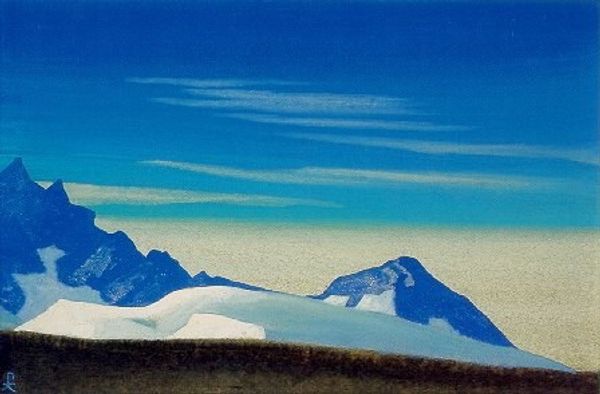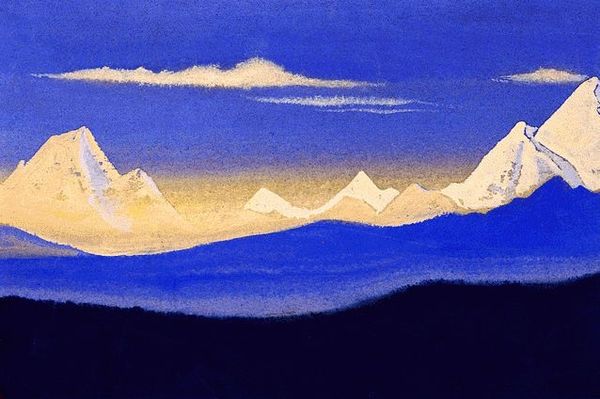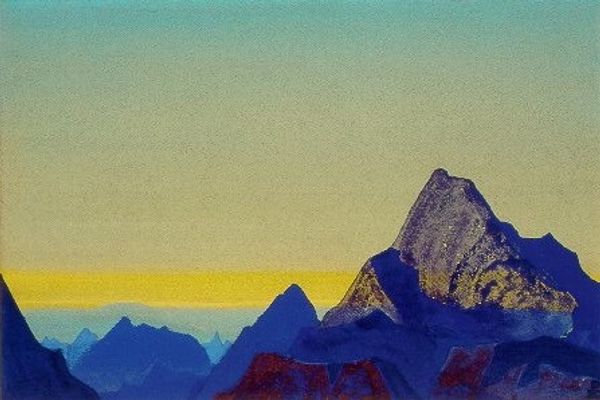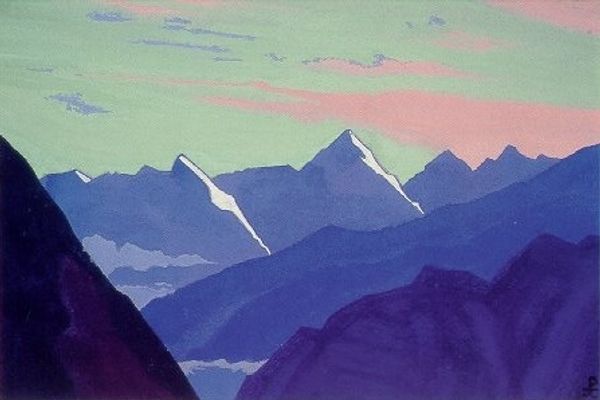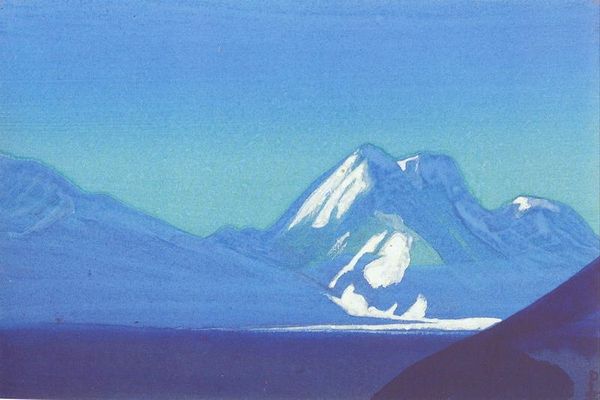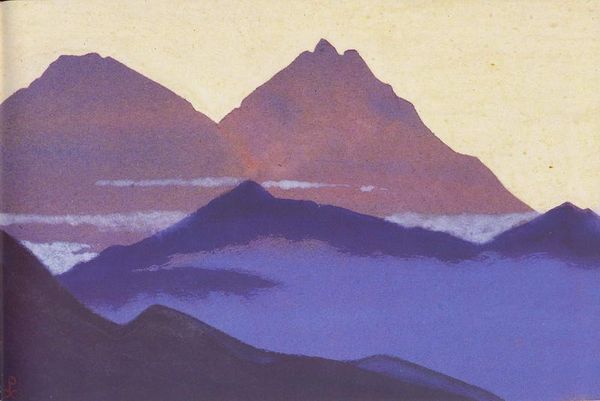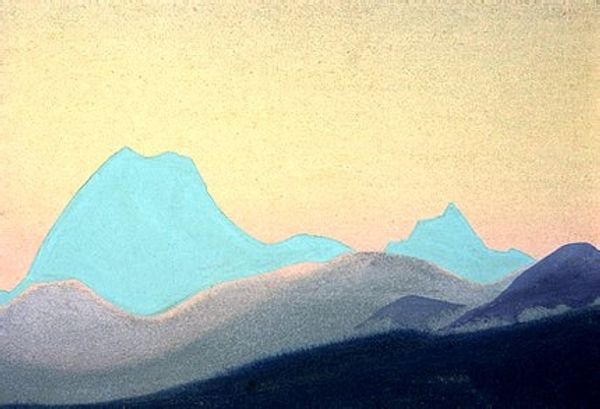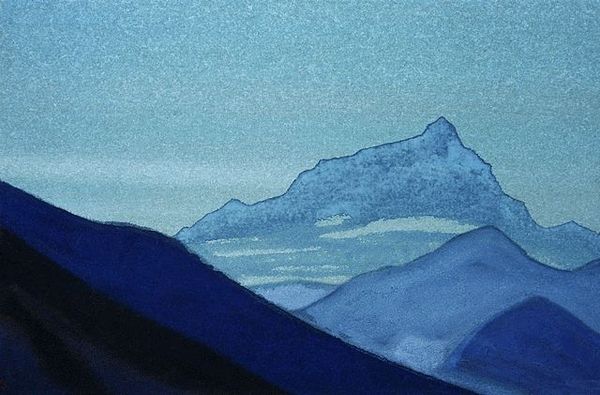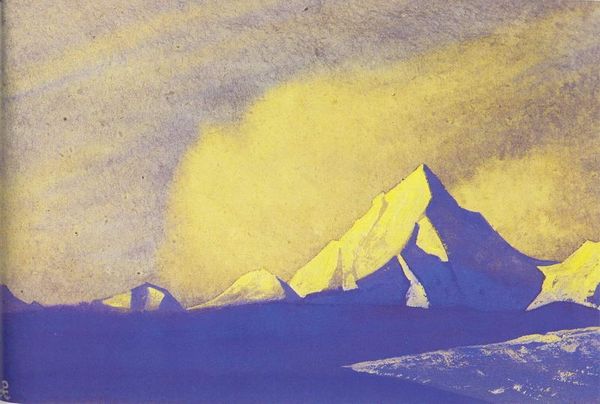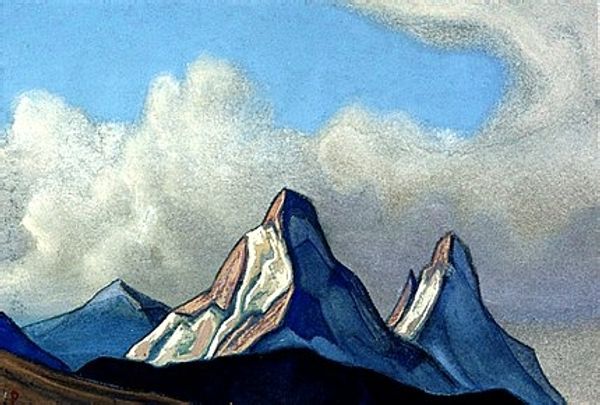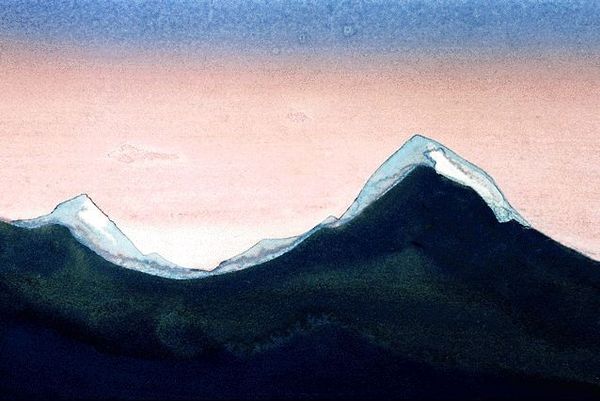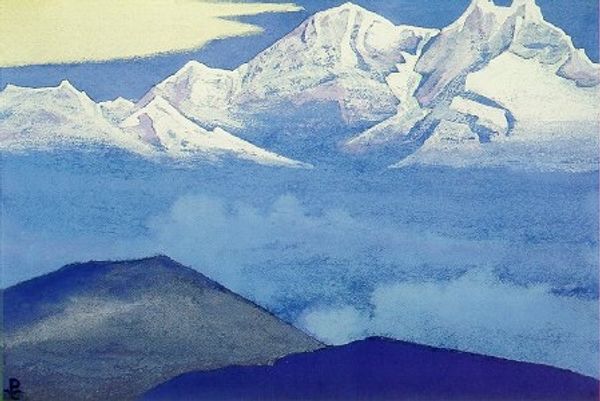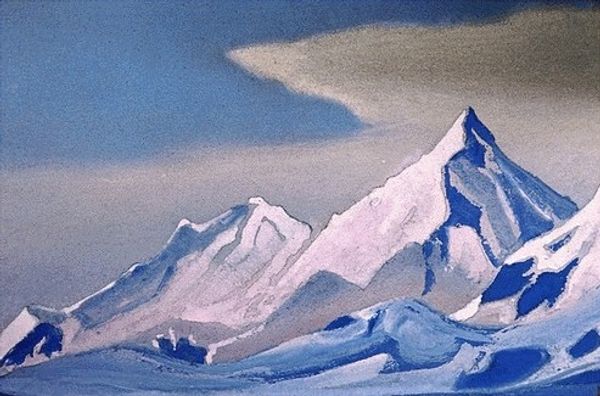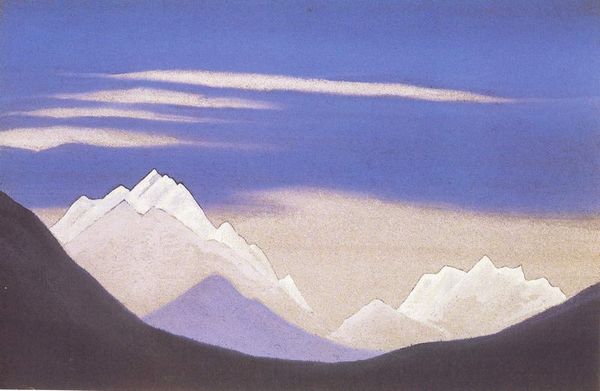
Dimensions: 31 x 46 cm
Copyright: Public domain
Curator: This is Nicholas Roerich’s "Everest," created in 1937. He captures the majesty of the Himalayas using oil on canvas. Editor: My initial reaction is one of serene distance. The cool blues and the sharp, geometric forms of the mountains create a sense of aloof grandeur. It’s incredibly striking. Curator: Roerich’s work is so fascinating when we examine its context. He wasn’t merely painting a landscape; he imbued these mountain scenes with spiritual and political significance, aligning with his theosophical beliefs and his utopian visions for a peaceful, enlightened world. "Everest" becomes a symbol of human aspiration, rendered in the interwar period, with looming feelings of anxiety. Editor: The composition itself is interesting, wouldn't you agree? Note the layering of the mountain ranges receding into the background. Each plane is delineated by subtle tonal shifts of the blue. This gives a sense of immense depth, pulling the viewer's eye into the distance. And observe the minimal use of detail—Roerich relies on simple shapes and stark contrasts. Curator: Exactly! The lack of detail and the focus on broad, simplified forms resonate with modernist ideals of abstraction and universalism. His paintings aimed to transcend the particular and connect with deeper, almost archetypal, human experiences, so of course Roerich worked within these artistic frameworks. Consider, too, the connection between mountain-scapes and ideas of nationalism. Editor: An astute observation. The almost monochromatic palette contributes to the painting’s evocative nature. By limiting his color range, Roerich directs our focus toward the structure and geometry inherent in the natural forms he depicts. I'm intrigued by that thin horizontal cloud as well, dividing the picture plane and acting as a bridge, both formal and symbolic, between the earthly mountains and the boundless sky. Curator: And it subtly nods towards Eastern philosophical concepts, representing enlightenment. It is also poignant to acknowledge the ways in which Roerich’s theosophical commitments and involvement in Eastern cultural and spiritual movements may exoticize the places and people whom he visited. It raises critical questions about cultural appropriation and representation that cannot be ignored. Editor: These competing interpretive frameworks are important. Thank you. I find Roerich’s sophisticated understanding of form incredibly impactful here. Curator: Yes. Thank you. "Everest" provides so much scope for investigation, prompting necessary, complex thought.
Comments
No comments
Be the first to comment and join the conversation on the ultimate creative platform.
